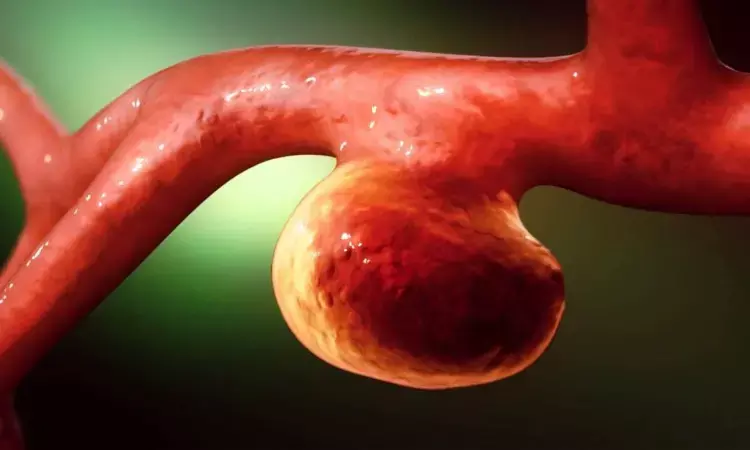- Home
- Medical news & Guidelines
- Anesthesiology
- Cardiology and CTVS
- Critical Care
- Dentistry
- Dermatology
- Diabetes and Endocrinology
- ENT
- Gastroenterology
- Medicine
- Nephrology
- Neurology
- Obstretics-Gynaecology
- Oncology
- Ophthalmology
- Orthopaedics
- Pediatrics-Neonatology
- Psychiatry
- Pulmonology
- Radiology
- Surgery
- Urology
- Laboratory Medicine
- Diet
- Nursing
- Paramedical
- Physiotherapy
- Health news
- Fact Check
- Bone Health Fact Check
- Brain Health Fact Check
- Cancer Related Fact Check
- Child Care Fact Check
- Dental and oral health fact check
- Diabetes and metabolic health fact check
- Diet and Nutrition Fact Check
- Eye and ENT Care Fact Check
- Fitness fact check
- Gut health fact check
- Heart health fact check
- Kidney health fact check
- Medical education fact check
- Men's health fact check
- Respiratory fact check
- Skin and hair care fact check
- Vaccine and Immunization fact check
- Women's health fact check
- AYUSH
- State News
- Andaman and Nicobar Islands
- Andhra Pradesh
- Arunachal Pradesh
- Assam
- Bihar
- Chandigarh
- Chattisgarh
- Dadra and Nagar Haveli
- Daman and Diu
- Delhi
- Goa
- Gujarat
- Haryana
- Himachal Pradesh
- Jammu & Kashmir
- Jharkhand
- Karnataka
- Kerala
- Ladakh
- Lakshadweep
- Madhya Pradesh
- Maharashtra
- Manipur
- Meghalaya
- Mizoram
- Nagaland
- Odisha
- Puducherry
- Punjab
- Rajasthan
- Sikkim
- Tamil Nadu
- Telangana
- Tripura
- Uttar Pradesh
- Uttrakhand
- West Bengal
- Medical Education
- Industry
Monitoring period may be increased for small thoracic aortic aneurysms considering their slow Growth rate: Study

UK: A recent study in the European Heart Journal has suggested that for small aneurysms, international guidelines should consider increasing monitoring intervals to 12 months and increasing intervention thresholds. Also, age, size, sex, growth, surgical risk, and patient characteristics should be considered in individualized decisions about surveillance/intervention.
Chronic thoracic aortic aneurysm (CTAA) of the arch or descending thoracic aorta (DTA) if undiagnosed or neglected as aneurysms expand, is life-threatening. Aneurysm growth is related to dissection (tearing) or rupture of the aortic wall. After diagnosis, 6-month mortality in treated and untreated patients with CTAA is estimated to be 17.7% and 30%, respectively.
Against the above background, Linda Sharples, Department of Medical Statistics, London School of Hygiene and Tropical Medicine, London, UK, and colleagues aimed to observe, describe, and evaluate the management and timing of intervention for patients with untreated thoracic aortic aneurysms.
For this purpose, the researchers conducted a prospective study of UK National Health Service (NHS) patients aged ≥18 years, with new/existing arch or descending thoracic aortic aneurysms of ≥4 cm diameter. They were followed up until death, intervention, withdrawal, or July 2019.
Outcomes included survival, aneurysm growth, hospital admissions, and quality of life (using the EQ-5D-5L utility index). 886 patients were recruited between 2014 and 2018 from 30 NHS vascular/cardiothoracic units.
Key findings of the study include:
- The maximum aneurysm diameter was in the descending aorta in 725 (82%) patients, growing at 0.2 cm per year.
- Aneurysms of ≥4 cm in the arch increased by 0.07 cm per year.
- Baseline diameter was related to age and comorbidities, and no clinical correlates of growth were found.
- During follow-up, 129 patients died, 64 from aneurysm-related events.
- Adjusting for age, sex, and New York Heart Association dyspnoea index, the risk of death increased with aneurysm size at baseline [hazard ratio (HR): 1.88 per cm] and with growth [HR: 2.02 per cm,].
- Hospital admissions increased with aneurysm size [relative risk: 1.21 per cm].
- Quality of life decreased annually for each 10-year increase in age [–0.013] and for current smoking [–0.043].
- Aneurysm size was not associated with a change in the quality of life.
To summarize, the paper reported aneurysm growth, hospital admissions, survival, and health-related quality of life in a large group of patients.
"International guidelines should consider increasing monitoring intervals to 12 months for small aneurysms and increasing intervention thresholds, the researchers concluded.
Reference:
Linda Sharples, Priya Sastry, Carol Freeman, Colin Bicknell, Yi Da Chiu, Srinivasa Rao Vallabhaneni, Andrew Cook, Joanne Gray, Andrew McCarthy, Peter McMeekin, Luke Vale, Stephen Large, on behalf of the ETTAA Collaborative Group, Aneurysm growth, survival, and quality of life in untreated thoracic aortic aneurysms: the effective treatments for thoracic aortic aneurysms study, European Heart Journal, Volume 43, Issue 25, 1 July 2022, Pages 2356–2369, https://doi.org/10.1093/eurheartj/ehab784
Dr Kamal Kant Kohli-MBBS, DTCD- a chest specialist with more than 30 years of practice and a flair for writing clinical articles, Dr Kamal Kant Kohli joined Medical Dialogues as a Chief Editor of Medical News. Besides writing articles, as an editor, he proofreads and verifies all the medical content published on Medical Dialogues including those coming from journals, studies,medical conferences,guidelines etc. Email: drkohli@medicaldialogues.in. Contact no. 011-43720751


